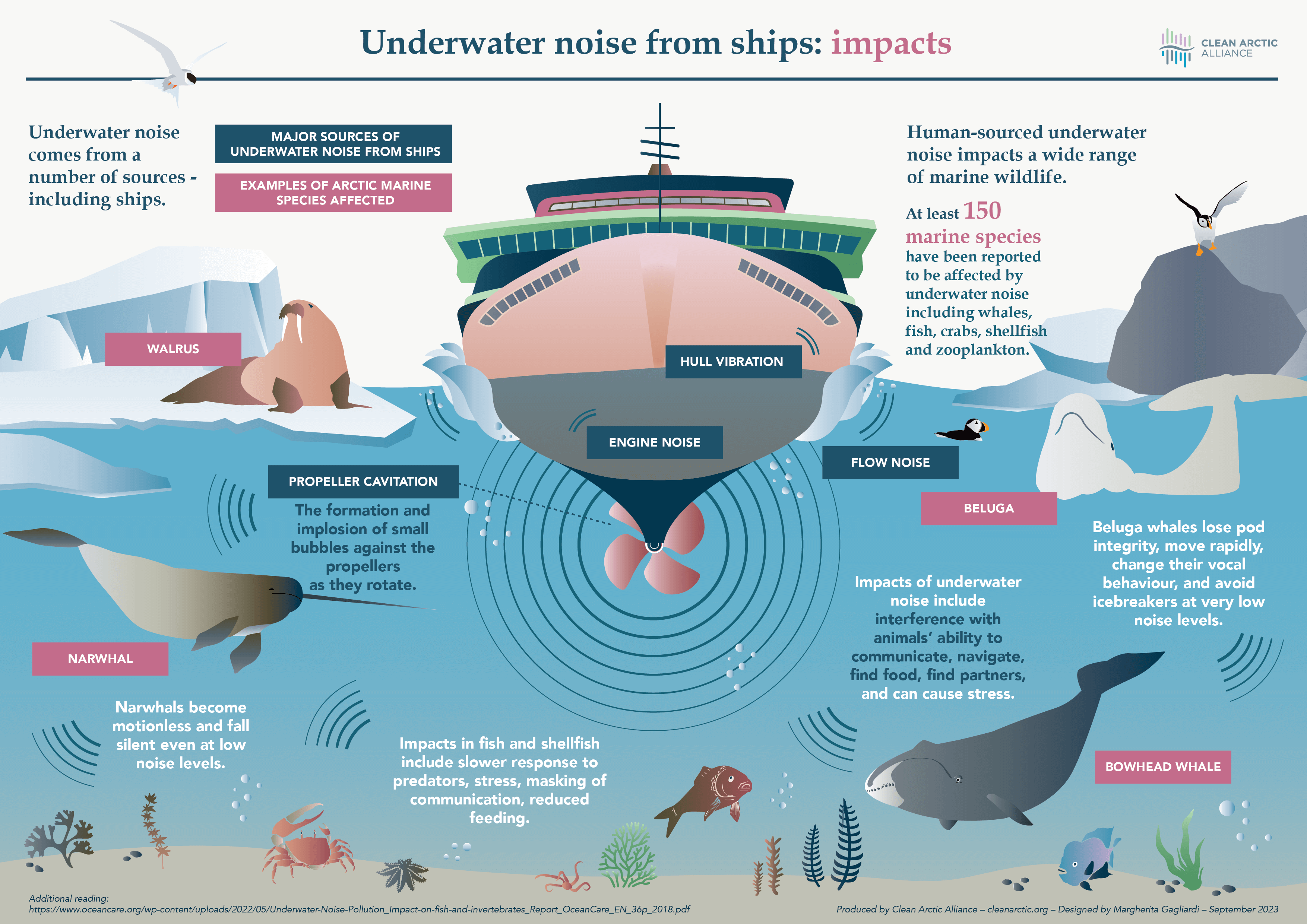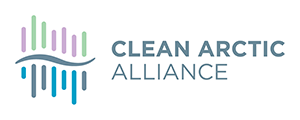
London, 26 January 2024:- As a meeting of the International Maritime Organization’s Sub-Committee on Ship Design and Construction (SDC 10) closed today in London, the Clean Arctic Alliance welcomed the IMO’s agreement on reducing underwater noise pollution from shipping, but criticised its failure to make progress toward mandatory rules that would decrease the impact of shipping on Arctic wildlife.
”The IMO this week missed an important opportunity to ensure the shipping sector has a legal obligation to marine wildlife and the people who depend on marine resources from the impacts of underwater noise”, said Dr Sian Prior, Lead Advisor to the Clean Arctic Alliance. “While progress was made on approval of a global action plan, and taking on board the lessons learned from a three-year experience building phase on the use of guidance to reduce underwater noise, the deletion of any mention of mandatory measures from the action plan is very disheartening. However, experience has taught us that we must continue to press for regulations for the shipping sector to protect the ocean and marine life.”

“Various means to reduce underwater noise from ships are already available”, explained Eelco Leemans, Clean Arctic Alliance Technical Advisor. “For example, slowing ships down will reduce underwater noise, and this is particularly needed in ecologically sensitive areas. This will also reduce CO2 emissions and reduce the risks of collision with marine mammals so could be a quick win. So while IMO has yet to commit to the future regulation of underwater noise, shipowners can and should already take action”.
Although there is yet to be an IMO commitment to mandatory rules in the future, building on the previously agreed supplemental Guidelines for Underwater Radiated Noise Reduction in Inuit Nunaat and the Arctic, the action plan agreed by the IMO this week does include a commitment to develop a ‘how to’ framework to support the implementation of the Inuit Nunaat and Arctic guidelines.
“A bright spot this week has been the full acceptance of the Arctic Guidelines and an interest from the global shipping community to make them a reality by putting them into practice”, said Sarah Bobbe, Senior Arctic Program Manager with Ocean Conservancy. “With noise pollution from shipping doubling in the past years in certain areas in the Arctic, and Arctic shipping traffic on a steep upward curve, measures to reduce noise are urgently needed. In the absence of a mandatory framework, Arctic states and operators need to find ways to sharply reduce their noise footprint while transiting through the Arctic’s climate vulnerable waters and coastal communities.”
As SDC10 opened earlier this week, the Clean Arctic Alliance called for four main actions to advance the reduction of underwater noise from ships. While many of these tasks were agreed, regrettably the only discussion of mandatory measures was to delete any prospect of them from the action plan and experience building phase:
- A structure, timeline and a plan for the IMO’s Experience Building Phase (EBP) was adopted.
- A new task was included in the action plan linking energy efficiency measures that provide underwater noise reduction benefits and the need for further ongoing connection to climate mitigation and reducing GHGs.
- The action plan and experience building phase framework were referred as an urgent agenda item to MEPC 81 in March 2024 for their endorsement and submissions were encouraged for MEPC82 in September to continue the work.
- The action plan included a commitment to develop a ‘how to’ framework to support the implementation of the Inuit Nunaat and Arctic guidelines.
ENDS
Contact:
Dave Walsh, Communications Advisor, [email protected], +34 691 826 764
About the Clean Arctic Alliance
Made up of 22 not-for-profit organisations, the Clean Arctic Alliance campaigns to persuade governments to take action to protect the Arctic, its wildlife and its people.
Members include: The Altai Project, Alaska Wilderness League, Bellona, Clean Air Task Force, Ecology and Development Foundation ECODES, Environmental Investigation Agency, Friends of the Earth US, Global Choices, Green Global Future, Green Transition Denmark, Greenpeace, Iceland Nature Conservation Association, International Cryosphere Climate Initiative, Nature And Biodiversity Conservation Union, Ocean Conservancy, Pacific Environment, Seas At Risk, Surfrider Foundation Europe, Stand.Earth, Transport & Environment, WWF and Zero.
More more information visit https://www.cleanarctic.org/

